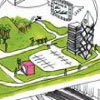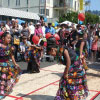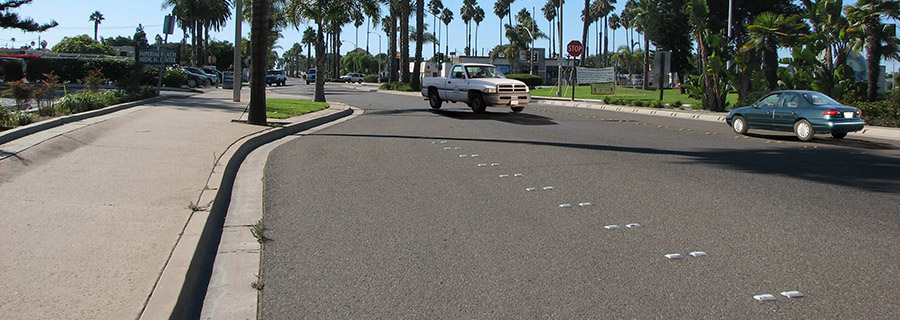
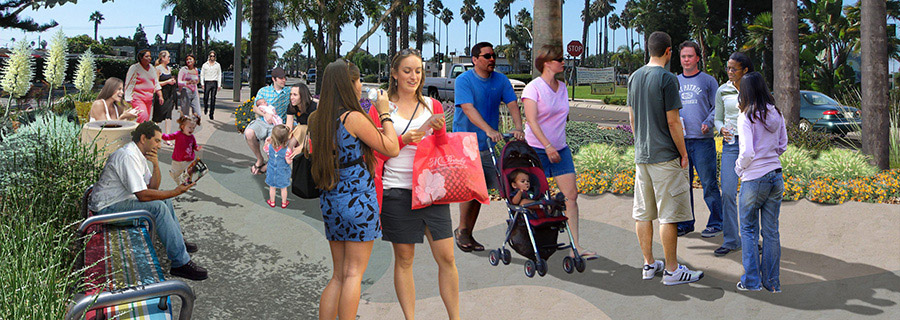
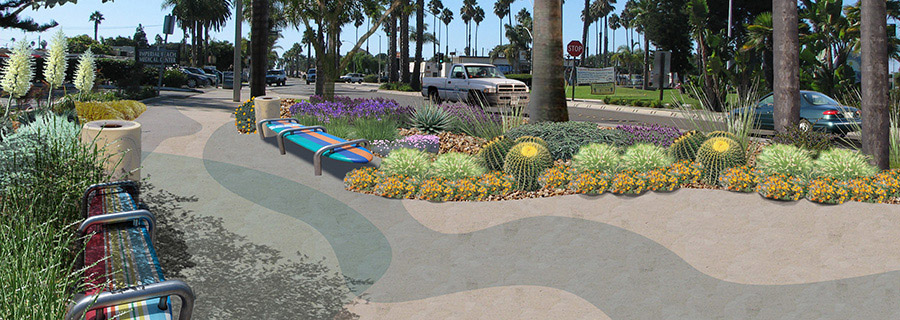
Social gathering is defined as interactions among a diversity of individuals of all abilities in small, medium and large groups for social and community purposes. Street life used to be an integral part of the social life of people. Friends met and hung out on the street, children played there, neighbors caught up with each other, and people watched people. This kind of vibrant street life has been greatly reduced over the years primarily due to the increase in vehicular traffic on the street. Donald Appleyard’s seminal study "Liveable Streets" (1982) showed that social connections between people on a street were inversely proportionate to the amount of traffic. In addition there is a perception that social activities on the streets might block traffic or increase crime. There are also concerns that that there will not be adequate maintenance of the spaces and an increase in liability for the city.
The design of streets and alleys for social gathering will need to put people before cars and address other concerns that are barriers to bringing life back to the street. This topic looks at different ways to create the right framework for social space that balances the needs of the vehicular traffic, pedestrian sense of safety and comfort, and a connection to adjoining land uses.
The Need for Social Gathering
Social streets have always served the important role of being the “third place” between home and workplace where broader, more creative interaction in a free non-privatized environment is encouraged. A well designed social street is a great outdoor living room that is welcoming of people of all genders, race, ethnicity, age and socio-economic levels.
Streets designed to be social hubs build trust in the community by creating opportunities to know ones neighbors. The street becomes the place to meet old friends, make new ones and to participate in the drama that is life. Creating streets that convey a sense of belonging and inclusion can encourage social cohesion and discourage isolation. Being connected to the community in small and big ways has a positive influence on the mental well being of its users. Having more people on the street at various times of the day and night also increases safety in the area.
Allan Jacobs said it well in his book "Great Streets" (1995), “First and foremost, a great street should help make a community: should facilitate people acting and interacting to achieve in concert what they might achieve alone. Accordingly, streets that are accessible to all, easy to find and easy to get to, would be better than those that are not. The best streets will be those where it is possible to see other people and to meet them; all kinds of people, not just of one class or color or age. “The best streets encourage participation. People stop to talk or maybe they sit and watch, as passive participants, taking in what the street has to offer.”
Streets designed for social gathering also have the potential to reflect and exhibit the identity of their residents, businesses, historical occupants and visitors. A well designed social space can also be the motivation for spending time outside reading on a bench or playing a game of pickup on the street.
Street design is a great opportunity to create vibrant places where people want to spend their time. The street can be a place that provides opportunities for social gathering by including a diversity of ways to engage with others and the larger community. Social streets should accommodate a variety of people and abilities (singles, couples, families, people with disabilities, elders, pet owners, etc.) and in varying locations (sun/shade and exposed/protected). It is also crucial to provide the infrastructure and framework for varied and ever-changing activities and events in these spaces.
Streets designed for social gathering should aim to meet the following overall goals:
- Provide a diversity of safe and desirable spaces that facilitate and accommodate a wide range of human interaction.
- Be inclusive of uses that change with time of day, week or year.
- Promote community pride and ownership.
- Encourage social interactions that create and enhance connections between individuals and the larger community.
- Engage people and encourage them to return.
Streets designed for social gathering should include a diversity of activities including but not limited to:
- Talking
- Sitting
- Meeting
- Networking
- People watching
- Eating & drinking
- Cooking
- Performing - singing, dancing, etc.
- Demonstrating/protesting
- Working
- Resting
- Reading
- Playing games
- Shopping
1. Informal/ Spontaneous social gathering: These are the encounters of everyday life that happen spontaneously on the street. These kinds of interactions can be supported with a basic level of infrastructure that enables people to use the street as their social space.
Examples:
- Seat walls of different heights along a sidewalk
- Stairs, stoops, platforms and porches that face the street
- Fences with nooks for sitting
- Art elements on the street
2. Formal/ Programmed social gathering: These are gatherings that only happen with intentional programming and often require a higher level of street infrastructure. These kinds of gatherings encourage people who would normally not come to the street to experience it as a social space.
Examples:
- Eating spaces supporting formal/informal commerce
- Stage settings for performances
- Organized events like street fairs, farmers’ markets and block parties
The street needs to include spaces that accommodate different scales of human interaction including intimate settings for families and friends, loose interactions between individuals, small and large group meet ups, community gatherings, etc. The social experience needs to be woven into the function of the street so as to become a natural and common occurrence.
A combination of elements and objects are essential to the design of streets with great social spaces. This includes but is not limited to:
- Seating, both fixed and movable, should be made of materials that are durable, require minimal maintenance, and provide a comfortable seating surface
- Shade providing elements (shelters, trees, tents, etc.) should be provided to protect users from the elements.
- Barriers or screens both permanent and temporary (planted screens, raised planter boxes, fixed and movable bollards) that can provide separation and protection among the various street activities.
- Lighting is a key element to provide nighttime visibility, as well as a sense of security. It is critical to encourage socializing on the street. It can also be designed to enhance a location’s mood or character.
- Power sources on the street cater to the needs of social activities that happen there. The power source would help operate a music system, provide additional lighting for a street party, and recharge a laptop, cell phone, and mobile reading devices such as a Kindle or iPad, etc.
- Water sources must be included for cleaning and maintaining the physical environment; cooking, handwashing, or other business use; for drinking water; and for any public restroom connections.
- Wi-fi (or other mobile information sources) access can provide opportunities for new ways of socializing on the street. It can help can maximize the social experience by making it easy to locate instant information about social and cultural events, discover the history of a place or post photos from an event.
- Trash and recycling receptacles are essential to maintain cleanliness, and an attractive public space that is conducive to social gatherings.
- Public restroom access is a basic amenity that can contribute to people and facilitate use of the street for extended periods of time.
- Performance spaces and artistic displays that are interpretive and engaging and contribute to activation of spaces and sense of place.
- Outdoor teaching and learning stations that encourage social interaction and creativity.
- Tables that encourage a variety of behaviors including eating, gaming, meeting, working, etc.
- Landmarks and wayfinding signage to identify special places and social gathering destinations.

